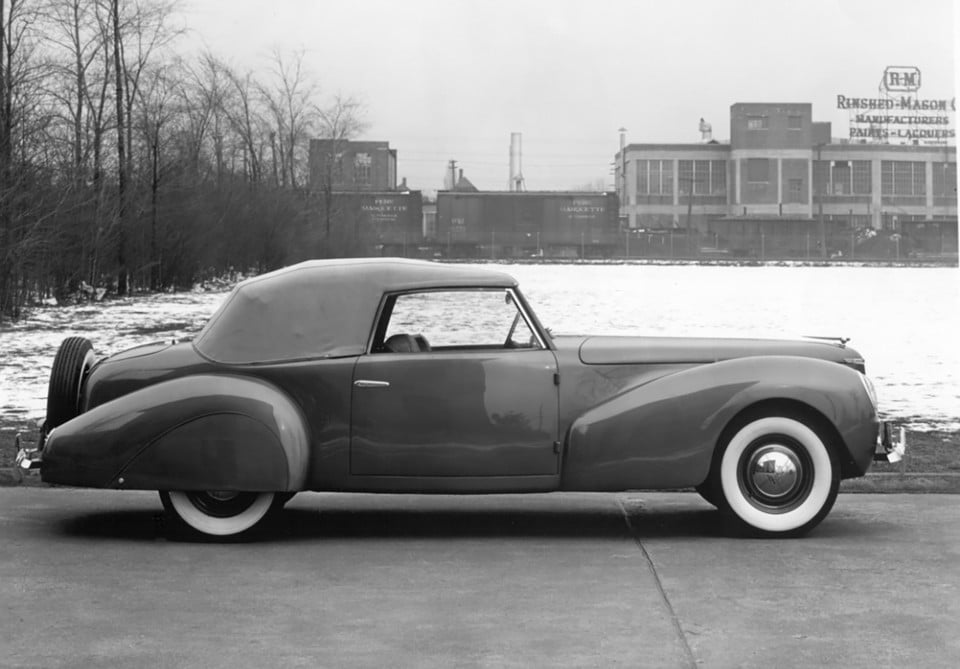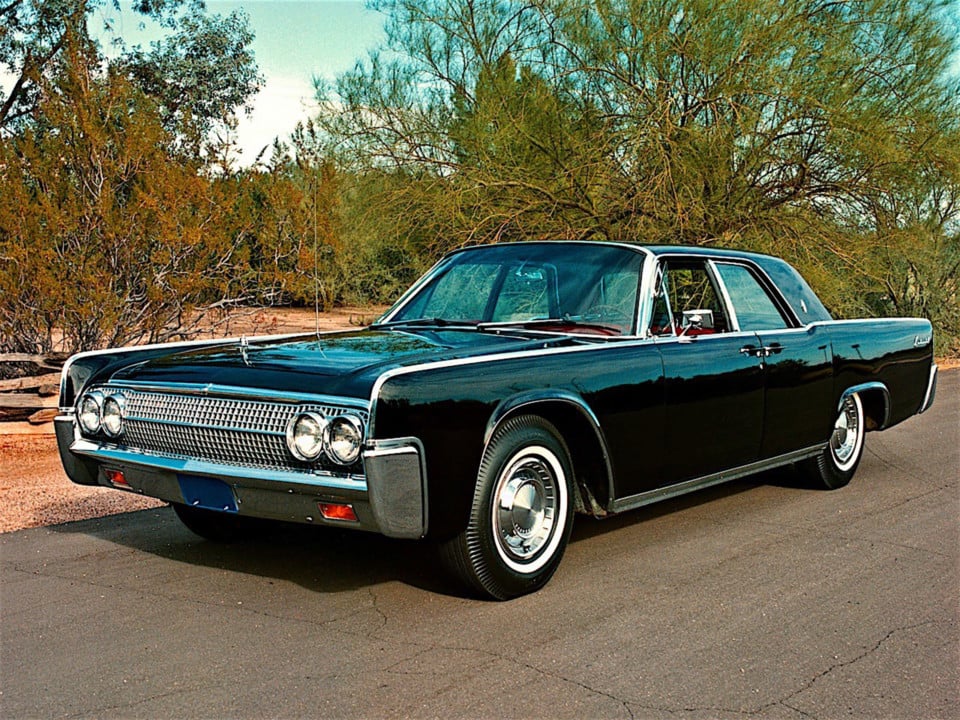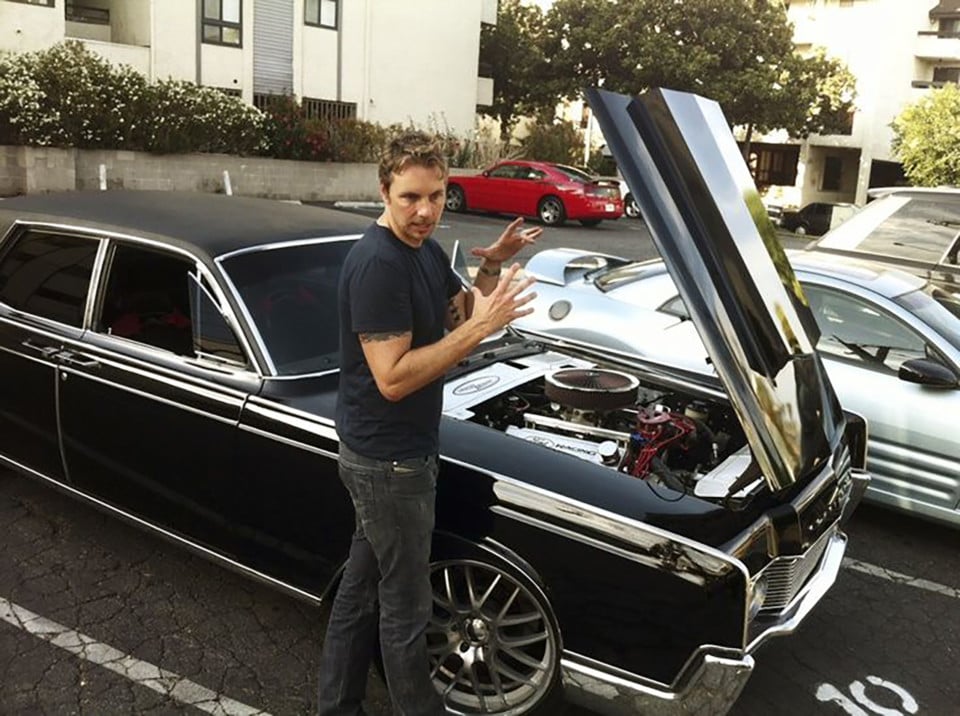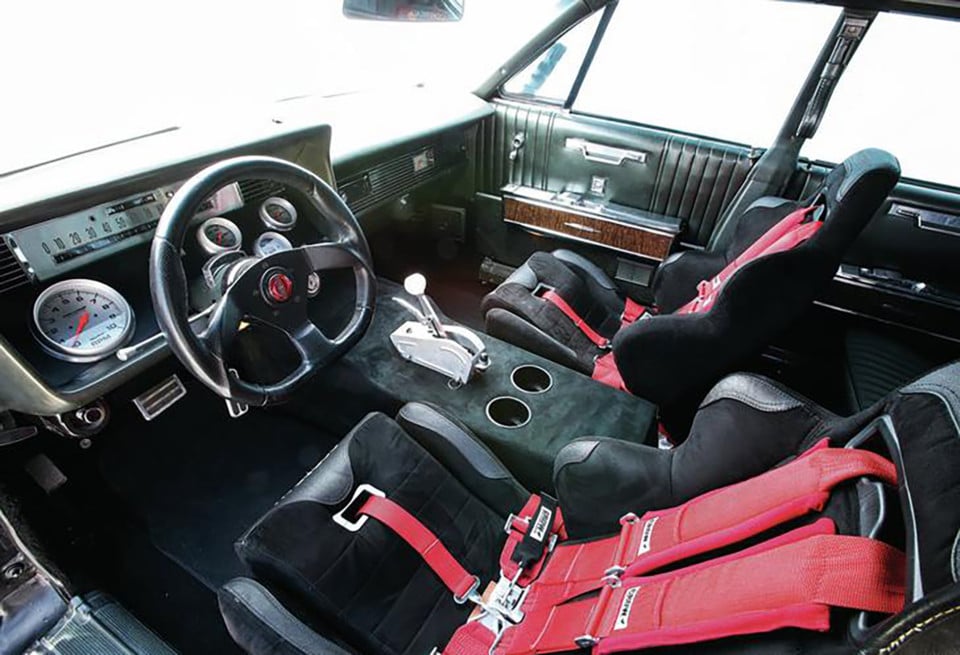It has one of the most iconic shapes of any American sedan ever produced. It has slab sides, a trunk the size of the Grand Canyon, and vacuum operated accoutrements. Heralded as a triumph of engineering, it was also associated with one of the darkest hours in American history.
Have you figured out the car I’m talking about yet? If not, then I’ll throw suicide doors into the mix.
Ah, now you’ve got it!
It’s the fourth-generation Lincoln Continental, and there’s a pretty mean ’67 featured in the 2012 comedic road movie Hit and Run. It’s also the subject of this month’s edition of “Rob’s Movie Muscle!”
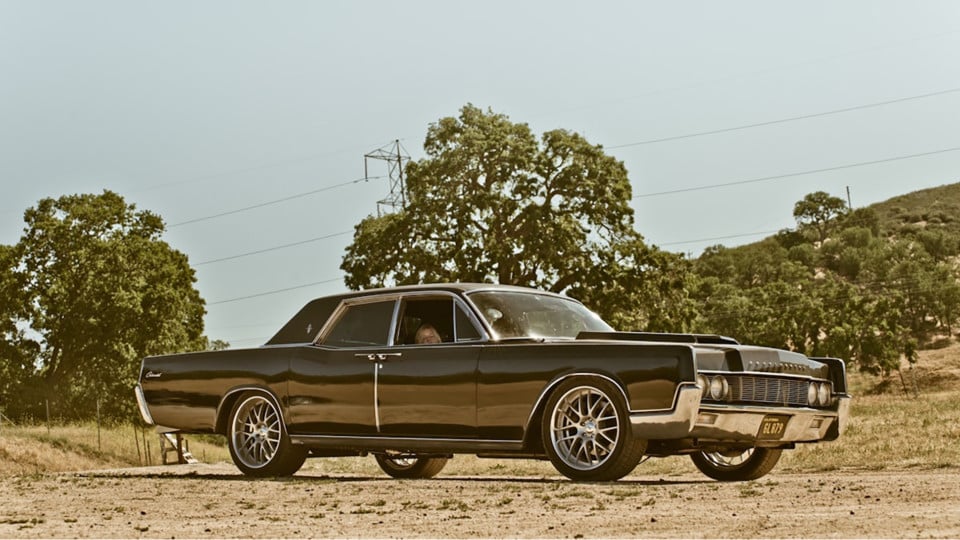
Dax Shepard’s 1967 Lincoln Continental four-door hardtop as seen in the movie Hit and Run. (Image courtesy of Open Road Films.)
Hit and Run was a largely overlooked film that was actually quite fun. It was written, directed, and edited by star, Dax Sheppard. It also featured a sublime cast of supporting thespians including Kristen Bell, Tom Arnold, Bradley Cooper, David Koechner, Beau Bridges, Jason Bateman, and Kristin Chenoweth.

Stars Kristen Bell and Dax Shepard, who also wrote, directed, and edited the movie. (Image courtesy of Open Road Films.)
The movie tells the story of a former getaway driver who risks his safety in the Witness Protection Program to drive his beloved girlfriend to Los Angeles for a life-changing job interview. His former gang, whom he ratted out, and the Feds who protect him, get wind of his plan, and give chase along the way.
The car Shepard’s character initially uses is a heavily modified and hot-rodded 1967 Conti that he and his father allegedly built together. A brief history lesson is in order before we look at the car in the film, though.
The Lincoln Continental was actually the result of a custom, coach-built 1939 Lincoln Zephyr that Edsel Ford commissioned for his personal holiday use. The car featured many European “continental” styling elements. It generated a good deal of attention whenever Ford rode in it.
Such was the positive reaction to the car, that Ford gave the go-ahead for it to be produced. It appeared as a standalone model in the 1940 Lincoln line when it was finally put into production.
The fourth generation of the car was styled by Ford Design Vice President, Elwood Engel. When it was first released in 1961, it was offered as a four-door sedan or four-door convertible. It was an astonishing 15 inches in overall length and 8 inches in wheelbase shorter than the outgoing model. Clearly it’s still a car of prodigious dimensions by today’s standards.
The Continental was given the absolute best in appointments and construction in order to compete with the Cadillac and Chrysler competition. It was subject to an unmatched post-assembly inspection which ensured each car was flawless in appearance and performance. It quickly gained a reputation for being the absolute finest domestic automobile of its time because of those stringent inspections.
The car rode on a unibody platform originally produced for the Ford Thunderbird. It was only offered with the Lincoln Mark V’s 430 cubic-inch (7.0 liter) V8 that was given a bump in displacement to 462 cubic inches for the 1966 model year. The later engine was rated at 340 horsepower, which was enough to hustle the 5,712-pound behemoth to 60mph in under 10-seconds.
All Continentals transmitted power to the rear wheels via a three-speed automatic transmission – no manual was ever offered.

The fourth generation Conti’s seminal styling element – the suicide doors. (Photo courtesy of www.alphacoders.com.)
The car’s styling really made it stand out, which was elegant, simple, and imposing all at the same time. The suicide doors made rear ingress and egress easy, and were a bold aesthetic statement. The upright, “electric shaver” grille was a masterpiece of design, and the curved side glass gave a touch of class with a simultaneous aero benefit.
Amongst the many options available on the Conti were front power disc brakes with a dual master cylinder, stainless steel dual exhaust system, front and rear seat belts, remote-controlled side mirrors, an impact absorbing tilt steering wheel, six-way power front seat, automatic climate control, power windows and doors, automatic parking brake release, and an AM/FM signal-seeking radio with tape deck.
Sales of the fourth-gen Continental were not brisk, in part because of the car’s $5,700 base price, but largely because of malaise in the overall sales of automobiles in the early-’60s. The assassination of President John F. Kennedy in a stretched version of the Continental, prepared by Hess & Eisenhardt, did little to boost sales. Eventually though, the car’s reputation for quality, a styling refresh for 1966, and a successful marketing campaign saw decent numbers moved.
The Continental in Hit and Run is a black-on-black 1967 four-door hardtop, that star Dax Shepard owned for more than ten years before filming the movie. To make the car more exciting, Shepard dropped the stock 462 and replaced it with a snarling Ford Racing 521 cubic-inch V8 crate motor, good for close to 700 horsepower. Power was fed through a Ford C6 transmission with a Gear Vendors overdrive to a 9-inch rear with 3.77 gears.
Other mechanical modifications include a Mass-Flo fuel management system, an Aeromotive A-1000 fuel pump, an Edelbrock Victor intake and a Mallory ignition. Custom 2-inch headers exit into Flowmaster 44 mufflers. Rear QA1 coil-overs along with 20″ American Eagle rims with Hankook Ventus AS rubber provide suspension and grip. Line lock, and a “stunt brake” consisting of a pedal operated second set of rear calipers enable easy drifting.
The interior of the car is a mix of original and custom-crafted appointments. Gauges, racing seats with six-point belts, a console, shifter, and steering wheel are amongst the specially crafted bits.
The car is given quite a thrashing in the film, with numerous burnouts, high-speed chases and drifts performed to amazing standards, and lovingly lensed in super slow-mo.
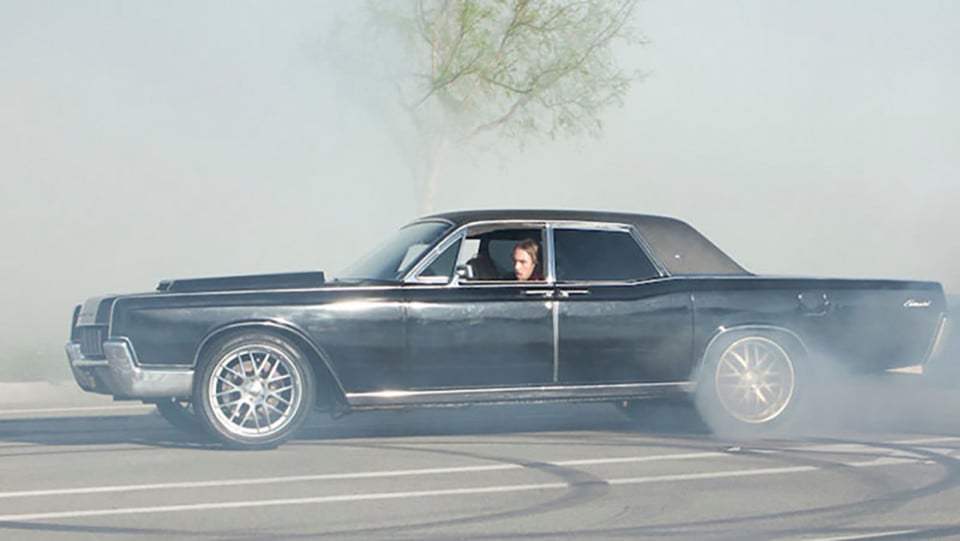
The Lincoln is put through its paces in the film, with many a burnout and drift. (Photo courtesy of Open Road Films.)
Not only is Hit and Run a fun little film, but its automotive star is a real sight to behold. I highly recommend you check them out.
See you next month!

